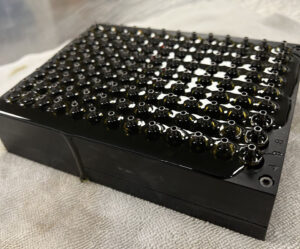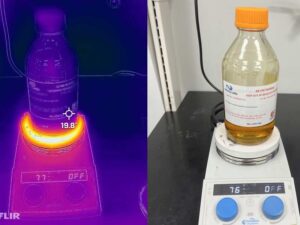I just want to start out by saying, while it is possible to suppress hardware/packaging COGS under $1 dollar if it raises stock-out risk or product failure risk it is not worth it. While you have better profitability on paper, these on paper financial simulations do not cover input QC, cash/inventory turnover, reliability, and extract quality – so the key is to lower COGS to a limit based on reasonable business risk without sacrificing too much upside profitability.
Obviously, this guide repeats things stated in business school textbooks; this is simply to maintain a comprehensive view of vaporizer manufacturing in general. If you have been manufacturing vapes for a while, you may only be interested in possible packaging options and drop vape sections, but for those newer to vaporizer manufacturing or just starting this should be an invaluable resource, covering everything for how to lowest possible cost of goods by selecting vaporizers, packaging and what to fill for manufacturing continuity.
ABBREVIATIONS
- BOM – Bill of Materials – Costs of the physical inputs (packaging vapes distillate)
- COGS – Cost of Goods – Total cost of goods including labor input
- CRP – Child Resistant Packaging
- FW – Flow Wrapping
- WO – Work Order
- QC – Quality Control
- JIT – Just in Time
BASIC INFO
COGS is the sum of all direct costs to produce a particular item. For instance, a vaporizer COGS would include the cartridge, filling material, packaging hardware, direct labor input, CRP mechanism, labels, and finally compliance testing. Minimizing costs on a per items basis is the objective of this guide. Thus, this guide doesn’t cover how to effectively manage the process of sourcing these items.
COGS – BOM COST(S) Ranges
Because COGS can range widely based on purchased in scale – we will calculate items at 100K unit volumes for comparative purposes. Labor costs are determined by dividing the output by cumulative hourly wages needed to complete the task in automated and unautomated production – while this is also an oversimplification and underestimation of labor costs one can assume a 20% average labor overhead cost premium due to holidays, taxes, and miscellaneous events.
Automation equals fast cash flow turnover
Fully automated production vs manual production not only is the cost savings obvious, but most also miss the fact that automation leads to a doubling or tripling of cash flow turnover (how fast a company can turn inventory into cash). Even companies that do not need the volume of production will greatly benefit from having inventory turn into cash in a fraction of the time.
Hardware BOM costs
| Cartridge | $0.90-$2.10 |
Cartridges range widely in cost and quality. From premium brands like C-cell to generic carts that can go as low as 60 cents. Generally speaking, cartridges that are under 90 cents do not have the ability to adequality provide quality control. There are usually good opportunities in the $1.00 range if one knows what to look for.
| Packaging (CRP ready) | $0.25 cents to $1.50 |
Packaging can be as small as flow-wrapped packages to full jewelry-style packs that look like perfume. This is highly dependent on the branding of the individual cartridge and whether to locate the CRP function with the cartridge or with the package. This impacts whether or not the package can be stored flat which impacts warehouse and manufacturing space.
Labeling / Stickers for Compliance / Tamper
Labels are super inexpensive and can be as small as 10 cents with compliance data printed. The issue at hand is the extra touch step needed to imprint compliance and testing data. To some extent, automated box and bag printers can ease this step.
Labor Costs
Labor costs are one of the most expensive costs of production. While theoretical costs are $0.15 cents per unit, any breakage in work or slow in demand immediately doubles or triples the cost per unit due to constant salaries being paid regardless of if the production line moves or not. Automation effectively allows for scale up and scale down of production as there is no cost outlays when a machine is shut down.
Scenario Example 1: Manual Filling with CR box
Manual labor with typical box packaging – assuming the usage of a 5-man filling crew and pre-folded box. Vaporizers produced in this fashion will box similar to lipstick or pharmaceutical box packaging. Due to the filling step being the slowest step of the process, boxing is integrated into the workflow but will require 1-2 extra workers. Also, manual filling loses 5-10% if extracts are just due to transfer loss and usually have a leak induction rate of about 0.1%.
| Hardware | Costs |
| Cartridge | $0.95 |
| CRP BOX | $1.00 |
| Tamper Sticker Label | $0.10 |
| Labor | Costs |
| Cartridge Filling Labor | $0.15 |
| Box Labor | $0.06 |
| Tamper Labor | $0.02 |
| Total COGS Cost: | $2.28 |
| Time to Complete 100K units: | 25-30 working days @ 8 hours per day |
| Total staff count | 8-9 |
* Keep in mind that hand-filled items require extra QC steps for underfill and overfill cartridges.
Scenario Example 2: Fully automated vape filling with CR box
Fully automated production with typical box packaging – assuming the usage of an automated production system with a pre-folded box. Vaporizers produced in this fashion will box similar to lipstick or pharmaceutical box packaging. Extra days are required to complete tasks due to box handling.
| HardWare | Costs |
| Cartridge | $0.95 |
| CRP BOX | $1.00 |
| Tamper Sticker Label | $0.10 |
| Labor | Costs |
| Cartridge Filling Labor | $0.015 |
| Box Labor | $0.06 |
| Tamper Labor | $0.02 |
| Total COGS Cost: | $2.10 |
| Time to Complete 100K units: | 16 working days @ 8 hours per day |
| Total staff count | 4-5 |
Scenario Example 3: Fully automated with flow wrapping
Fully automated production with flow-wrapped packaging – assuming the usage of an automated production system with a flow wrapping packaging system as well. Vaporizers produced in this fashion will have a compliant child-resistant product with an M&M / Skittles style bag
| HardWare | Costs |
| Cartridge | $0.95 |
| CRP BOX | $1.00 |
| Tamper Sticker Label | $0.10 |
| Labor | Costs |
| Cartridge Filling Labor | $0.015 |
| Box Labor | $0.015 |
| Tamper Labor | $0.015 |
| Total COGS Cost: | $1.25 |
| Time to Complete 100K units: | 12.5 working days @ 8 hours per day |
| Total staff count | 3 |
Scenario Example 3-A: Fully automated with flow wrapping running 12hr shift
Fully automated production with flow-wrapped packaging – assuming the usage of an automated production system with a flow wrapping packaging system as well. Vaporizers produced in this fashion will have a compliant child-resistant product with an M&M / Skittles style bag. This style of manufacturing runs almost a JIT style model where at the end of 4 days the production team as 50K vaporizers are done in 4 days and ready for distro on the 5th day.
| Total COGS Cost: | $1.25 |
| Time to Complete 100K units: | 8 working days @ 12 hours per day |
| Total staff count | 3 |





